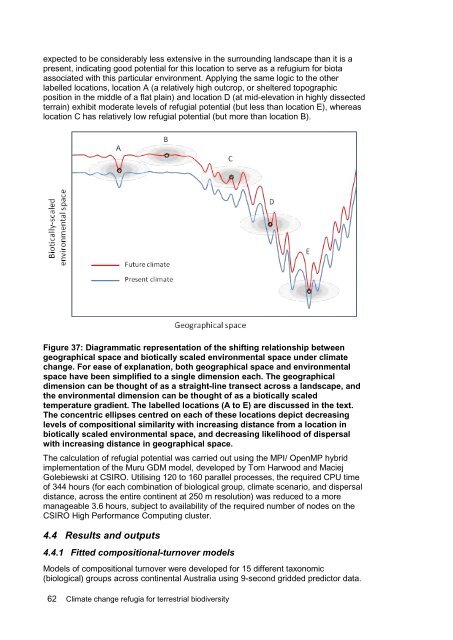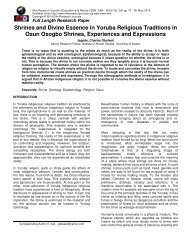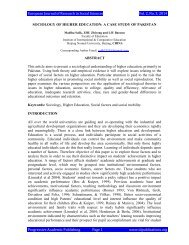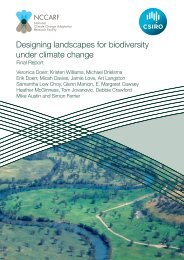Williams-Climate-change-refugia-for-terrestrial-biodiversity_0
Williams-Climate-change-refugia-for-terrestrial-biodiversity_0
Williams-Climate-change-refugia-for-terrestrial-biodiversity_0
You also want an ePaper? Increase the reach of your titles
YUMPU automatically turns print PDFs into web optimized ePapers that Google loves.
expected to be considerably less extensive in the surrounding landscape than it is a<br />
present, indicating good potential <strong>for</strong> this location to serve as a refugium <strong>for</strong> biota<br />
associated with this particular environment. Applying the same logic to the other<br />
labelled locations, location A (a relatively high outcrop, or sheltered topographic<br />
position in the middle of a flat plain) and location D (at mid-elevation in highly dissected<br />
terrain) exhibit moderate levels of <strong>refugia</strong>l potential (but less than location E), whereas<br />
location C has relatively low <strong>refugia</strong>l potential (but more than location B).<br />
Figure 37: Diagrammatic representation of the shifting relationship between<br />
geographical space and biotically scaled environmental space under climate<br />
<strong>change</strong>. For ease of explanation, both geographical space and environmental<br />
space have been simplified to a single dimension each. The geographical<br />
dimension can be thought of as a straight-line transect across a landscape, and<br />
the environmental dimension can be thought of as a biotically scaled<br />
temperature gradient. The labelled locations (A to E) are discussed in the text.<br />
The concentric ellipses centred on each of these locations depict decreasing<br />
levels of compositional similarity with increasing distance from a location in<br />
biotically scaled environmental space, and decreasing likelihood of dispersal<br />
with increasing distance in geographical space.<br />
The calculation of <strong>refugia</strong>l potential was carried out using the MPI/ OpenMP hybrid<br />
implementation of the Muru GDM model, developed by Tom Harwood and Maciej<br />
Golebiewski at CSIRO. Utilising 120 to 160 parallel processes, the required CPU time<br />
of 344 hours (<strong>for</strong> each combination of biological group, climate scenario, and dispersal<br />
distance, across the entire continent at 250 m resolution) was reduced to a more<br />
manageable 3.6 hours, subject to availability of the required number of nodes on the<br />
CSIRO High Per<strong>for</strong>mance Computing cluster.<br />
4.4 Results and outputs<br />
4.4.1 Fitted compositional-turnover models<br />
Models of compositional turnover were developed <strong>for</strong> 15 different taxonomic<br />
(biological) groups across continental Australia using 9-second gridded predictor data.<br />
62 <strong>Climate</strong> <strong>change</strong> <strong>refugia</strong> <strong>for</strong> <strong>terrestrial</strong> <strong>biodiversity</strong>






